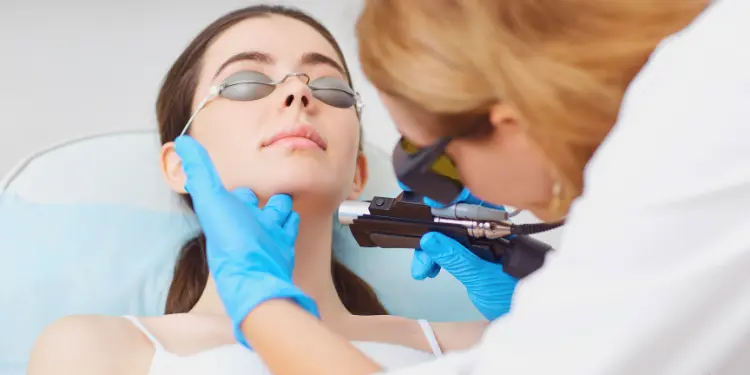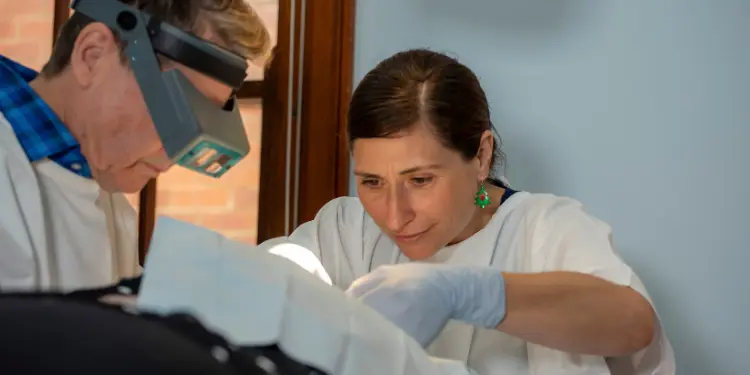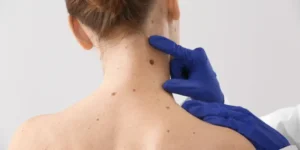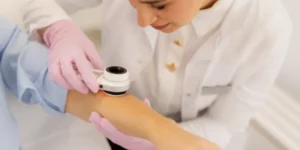If you’ve been told you need skin cancer removal Brisbane, it’s natural to feel a little anxious. But modern surgical techniques offer excellent outcomes—both medically and cosmetically. Whether you’re dealing with a basal-cell carcinoma, squamous-cell carcinoma, or an early-stage melanoma, understanding your options is the first step toward a smooth recovery and long-term health.

When is Skin Cancer Removal Necessary?
Doctors typically recommend surgical removal as soon as any of the following apply:
- Biopsy-confirmed skin cancers such as basal-cell carcinoma, squamous-cell carcinoma, or melanoma. Removing the tumour early limits the chance of it spreading deeper and minimises future scarring.
- Rapidly changing or symptomatic moles – If a mole suddenly begins to itch, bleed, or grow, it’s a clear signal for prompt removal.
- Pre-emptive excision of high-risk lesions – after a comprehensive pre-removal skin check, your clinician may advise removing a suspicious spot before biopsy results are back.
Early intervention helps minimize surgical margins, reduce downtime, and improve outcomes.
Skin Cancer Removal Options in Brisbane
There are several procedures available depending on your diagnosis, the location of the lesion, and your cosmetic priorities. Here’s a quick comparison:
| Procedure | Best For | Anaesthetic | Typical Downtime |
|---|---|---|---|
| Standard excision | Most basal-cell and squamous-cell carcinomas | Local | 7–10 days |
| “Slow Mohs” staged excision | Facial or ill-defined melanomas requiring precision | Local | ≈14 days |
| Curettage & cautery | Superficial basal-cell carcinomas on limbs or trunk | Local | 3–5 days |
Detailed explanations of each technique, including diagrams and scar photos, live on the skin-cancer removal procedures page.
Why So Many Surgical Options?
No two skin cancers are the same. Factors influencing your treatment plan include:
- Cancer type and stage – A superficial basal-cell cancer can often be treated quickly, while a deeper melanoma requires precision excision.
- Location – Removing skin cancers on the face requires tissue-sparing techniques to maintain symmetry.
- Size of the lesion – Larger lesions may need a flap or graft to close the wound.
- Your preferences – Some patients prioritise cosmetic outcomes, while others value minimal downtime.
Your Brisbane skin cancer doctor will explain the pros and cons of each approach before recommending the best one for you.
What Does Skin Cancer Removal Cost in Brisbane?
Costs vary, but here’s a breakdown of what you can expect:
Consultation Fees
Most clinics charge a consultation fee that is partially covered by Medicare, leaving a small out-of-pocket gap.
Surgical Procedure Fees
Each type of excision has its own Medicare item number. If you have private health insurance with skin-related surgical cover, your out-of-pocket costs may be reduced—especially if the procedure occurs in a hospital.
Pathology, Dressings & Follow-Up
- Pathology analysis is billed separately.
- Dressings and wound care products may incur additional charges.
- Ask whether suture removal and follow-up visits are included.
Pro Tip: Always request an itemized quote with Medicare item numbers and estimated personal costs. This helps avoid any post-procedure billing surprises.
Recovery Tips After Skin Cancer Surgery
Successful healing depends not only on the surgeon’s skill but also on how well you care for the wound at home. Here’s how to support a smooth recovery:
First 48 Hours
- Keep dressings dry to prevent infection and maintain adhesion.
- Avoid showering directly on the site or soaking in water.
Week One
- Avoid strenuous activity until sutures are removed. Stretching or straining the wound could widen the scar.
- If your dressing falls off early, contact your clinic before replacing it.
After the Wound Seals
- Start silicone gel or sheet massage to reduce scar thickness.
- Continue this for up to three months for best results.
Long-Term Skin Protection
- Apply SPF 50+ sunscreen daily—even in winter or cloudy weather.
- Unprotected scars may darken or become raised.
Your nurse will demonstrate how to change dressings and provide a printed care timetable. Keep it somewhere visible—like on your fridge or bathroom mirror.
Follow-Up Care Timeline
| Timeframe | Purpose |
|---|---|
| Day 7 | Suture removal and wound inspection |
| Week 6 | Scar assessment and pathology discussion |
| Ongoing | For melanoma: 3-monthly skin checks and lymph node reviews |
For melanomas or high-risk lesions, additional imaging or sentinel node biopsy may be discussed.
Frequently Asked Questions
Does Skin Cancer Removal Hurt?
The local anaesthetic may sting briefly, but the procedure itself is painless. Post-operative discomfort is usually mild and responds well to paracetamol.
Will There Be a Big Scar?
Most surgical scars are about 3–4 times the lesion’s width. For example, a 6 mm mole may leave a 2 cm scar. But with expert stitching, silicone products, and sun protection, most scars heal to a fine, pale line.
When Can I Drive Again?
If the excision is on your face or torso, you can drive as soon as you’re alert. If it’s on a hand or leg involved in driving, wait at least 24 hours or until it’s comfortable and safe to do so.
Final Word: Prioritise Early Removal & Skilled Care
Timely skin cancer removal in Brisbane can stop cancer in its tracks and often leaves minimal cosmetic impact. The key is:
- Choosing the right surgical technique
- Following recovery instructions
- Staying consistent with follow-ups
Ready to book a consultation? Contact us today to discuss your options and take control of your skin health.





